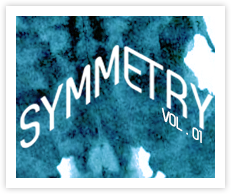

The two-way symmetrical communication debate
Kelly Lynch // March 22, 2013

What does it mean to communicate?
On a very basic level, it’s exchanging messages. One person sends, another receives and, ideally, responds in-kind. Ideally, they understand one another. Key word: ideally.
Those who attended the event “Two-way symmetrical communication: Feasible or fairy tale?” on Tuesday, March 19 were confronted with this notion of “ideal communications.” Is two-way symmetrical communication truly symmetrical? Is it the ethical ideal all communicators should be shooting for in practice? Panelists Roy Jamieson, Tony Yue and Alison DeLory helped facilitate the conversation around this topic with an earnest exploratory approach. I’ll give you the run-down, but first, let’s look at a definition of “symmetry.”
Wikipedia says: “Symmetry (from Greek συμμετρεῖν symmetreín “to measure together”) has two meanings. The first is a vague sense of harmonious and beautiful proportion and balance.[1][2] The second is an exact mathematical “patterned self-similarity” that can be demonstrated with the rules of a formal system, such as geometry or physics.”
Okay, we have a pretty straightforward definition. But is the model in question straightforward? Next question: Are human beings straightforward?
Absolutely not.
One of the reasons communicators are so hyperactive when it comes to “controlling their message” (admit it, you’re guilty), is that human beings are so unpredictable. If you’re good at being a professional communicator, you’re generally pretty good at anticipating how people will react to your messaging. But you’re never going to reach that 100 per cent certainty level. That, my dear, is impossible.
Last week we published two articles on James Grunig’s two-way symmetrical communication model. We had an argument explaining why the model is beneficial, and an argument questioning the model’s effectiveness. The first article, written by the Mount’s own Professor Alison DeLory, talks about Grunig’s overall approach to the model. The table below is a nice summary, with number four being the winner, of course.
|
Model Name |
Type of Communication |
Model Characteristics |
| Press agentry/publicity model | One-way communication | Uses persuasion and manipulation to influence audience to behave as the organization desires |
| Public Information model | One-way communication | Uses press releases and other one-way communication techniques to distribute organizational information. Public relations practitioner is often referred to as the “journalist in residence.” |
| One-way asymmetrical model | One-way communication | Uses persuasion and manipulation to influence audience to behave as the organization desires. Does not use research to find out how it publics feel about the organization. |
| Two-way symmetrical model | Two-way communication | Uses communication to negotiate with publics, resolve conflict, and promote mutual understanding and respect between the organization and its public(s). |
The second article, the “nay” article was written by BPR undergraduate Melanie Brister, who also spearheaded organizing the event. Her points circled around the “model versus reality” argument:
“Does this render an ideal such as two-way symmetrical communications useless? Well, ultimately it depends on what actions are being taken toward achieving the ideal. Do we act with reverence towards it and aspire to achieve it? Or is it too divorced from the practice that the fieldwork and its guiding principles have lost touch?” (Brister, 2013).
Just because a model is idealistic in nature, does this mean it is unattainable? As DeLory points out in her article, no organization is going to be practicing two-way symmetrical communications all the time. And at the event, we were confronted with a lot of practicalities, such as the size of an organization, the fact that often you’ll be collaborating with teams, leaders or departments with entirely different goals, agendas, and opinions than the communications team. You might have a body with access to the dominant coalition – but it’s not likely, despite Grunig’s emphasis on the importance of this factor.
It’s looking more and more like the two-way symmetrical model is less “mathematical” and more “vaguely harmonious.” But should communicators be striving for the mathematical version, or living the reality of a vaguely harmonious and beautifully proportioned model of communications (I’m not sure who typed that definition on Wikipedia, but I kind of love you, whoever you are). What’s going to produce the kind of ethics, transparency, and best practice that practitioners are looking for?
Because here’s the thing – we are looking for these things. We’ve moved from our not-so-savory publicity and persuasion roots to an approach to communications that strives to do good. To do good for the organizations we represent, yes, but also to be as transparent as we can with the audiences we communicate with. Yes, of course the world is an imperfect place, and communication is hard – why do you think we need professionals? (And hey, we work pretty hard at it, too). Not everybody is a good person, and not every communicator is ethical. But the industry standard is ethical, and “good communications” is synonymous with “ethical communications” – and that’s exactly how it should be. Deciding what ethical communications looks like is our next step. Is it symmetry we’re looking for, or something else? Something broader?
What came out of the discussion on Tuesday were questions. The panel started with questions, and we walked away with more. The sign of a truly stimulating debate. Thanks again to everyone who participated: professors and students alike collaborated and spurred on a fascinating dialogue around the topic.
If you’d like to see more events like this in the PR department, all you have to do is talk to your professors. And, if you want to check out some of the quotes from the day, the Mount and several others live-tweeted the event. Check out the #SymmetryPanel hashtag for some fantastic quotes, comments and photos.
